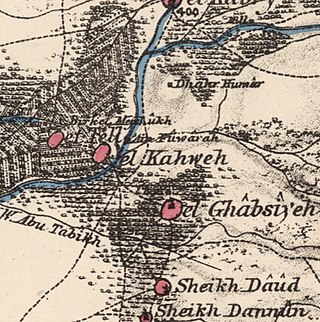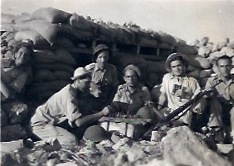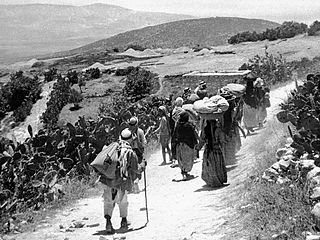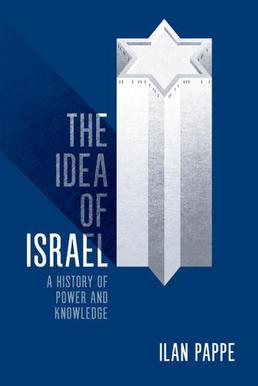Related Research Articles

Al-Ghabisiyya was a Palestinian Arab village in northern Palestine, 16 km north-east of Acre in present-day Israel. It was depopulated by the Israel Defense Forces during the 1948-1950 period of Palestinian expulsion and remains deserted.

Operation Hiram was a military operation conducted by the Israel Defense Forces (IDF) during the 1948 Arab–Israeli War. It was led by General Moshe Carmel, and aimed at capturing the Upper Galilee region from the Arab Liberation Army (ALA) forces led by Fawzi al-Qawuqji and a Syrian battalion. The operation, which lasted 60 hours, was marked by heavy fighting between Arabs and Jews, and ended just before the ceasefire with the neighboring Arab countries went into effect.

Killings and massacres during the 1948 Palestine war resulted in the deaths of hundreds of civilians and unarmed soldiers.
The al-Dawayima massacre describes the killing of civilians by the Israeli army (IDF) that took place in the Palestinian Arab town of al-Dawayima on October 29, 1948, during the 1948 Arab–Israeli War. The incident occurred after the town was occupied by the IDF's 89th Commando Battalion during Operation Yoav, encountering little resistance. The battalion was composed of former Irgun and Lehi forces.
Plan Dalet was a Zionist military plan executed in the civil war phase of the 1948 Palestine war for the conquest of territory in Mandatory Palestine in preparation for the establishment of a Jewish state. The plan was requested by the Jewish Agency leader and later first prime minister of Israel David Ben-Gurion, and developed by the Haganah and finalized on March 10, 1948. Historians describe Plan Dalet, in which Zionist forces shifted to an offensive strategy, as the beginning of a new phase in the 1948 Palestine war.

Al-Khisas, also known as Khisas or Khissas, was a Palestinian Arab village in the Safad Subdistrict in Mandatory Palestine. It was located 31 kilometers (19 mi) northeast of Safed on a natural terrace about 100 meters (330 ft) wide that formed when Lake al-Hula receded. To the west of the village was a valley known as Wadi al-Hasibani through which ran the Hasbani River.
The Balad al-Shaykh massacre was the killing of a large number of Palestinians by the Haganah in the village of Balad al-Shaykh during the early stages of the 1947–1948 civil war in Mandatory Palestine. It was one of the largest, and earliest, massacres during the 1948 Palestine war.

The Ein al Zeitun massacre occurred on May 1, 1948, during the 1948 War, at the Palestinian Arab village of Ein al-Zeitun just north of Safed, then part of the British Mandate for Palestine. According to various historians, 23-70 Arab prisoners were killed by the Palmach.

Ilan Pappé is an Israeli historian, political scientist, and former politician. He is a professor with the College of Social Sciences and International Studies at the University of Exeter in the United Kingdom, director of the university's European Centre for Palestine Studies, and co-director of the Exeter Centre for Ethno-Political Studies. Pappé was also a board member of the Israeli political party Hadash, and was a candidate on the party list in the 1996 and 1999 Israeli legislative elections.

Canada Park is an Israeli national park stretching over 7,000 dunams (7km2), and extending from No man's land into the West Bank. The park is located north of Highway 1, and is situated near the Ayalon Valley, between the Latrun Interchange and Sha'ar HaGai.

Yosef Weitz was the director of the Land and Afforestation Department of the Jewish National Fund (JNF). From the 1930s, Weitz played a major role in acquiring land for the Yishuv, the pre-state Jewish community in Palestine.

In February 1948, Yigal Allon, commander of the Palmach in the north, ordered an attack on Sa'sa'. The order was given to Moshe Kelman, the deputy commander of Third Battalion. The order read: "You have to blow up twenty houses and kill as many warriors as possible". According to Ilan Pappé, "warriors" should be read as "villagers" to properly understand the order. Khalidi, referencing "The History of the Haganah" by Ben-Zion Dinur, say they referred to the massacre as "one of the most daring raids into enemy territory."

Qumya, was a Palestinian village of 510 inhabitants when it was depopulated prior to the 1948 Arab-Israeli war.

Tantura was a Palestinian Arab fishing village located 8 kilometers (5 mi) northwest of Zikhron Ya'akov on the Mediterranean coast of Israel. Near the village lie the ruins of the ancient Phoenician city of Dor.

The 1949–1956 Palestinian expulsions were a continuation of the 1948 expulsion and flight of Palestinian Arabs from Israeli-controlled territory that occurred after the signing of the 1949 ceasefire agreements. This period of the exodus was characterised predominantly by forced expulsion during the consolidation of the state of Israel and the growing tension along ceasefire lines that ultimately lead to the 1956 Suez Crisis.

Ayn Ghazal was a Palestinian Arab village located 21 kilometers (13 mi) south of Haifa. Depopulated during the 1948 Arab-Israeli War as a result of an Israeli military assault during Operation Shoter, the village was then completely destroyed. Incorporated into the State of Israel, it is now mostly a forested area. The Israeli moshav of Ofer ("fawn") was established in 1950 on part of the former village's lands. Ein Ayala, a moshav established in 1949, lies just adjacent; its name being the Hebrew translation of Ayn Ghazal.
In the 1948 Palestine war, more than 700,000 Palestinian Arabs – about half of Mandatory Palestine's predominantly Arab population – were expelled or fled from their homes, at first by Zionist paramilitaries, and after the establishment of Israel, by its military. The expulsion and flight was a central component of the fracturing, dispossession, and displacement of Palestinian society, known as the Nakba. Dozens of massacres targeting Arabs were conducted by Israeli military forces and between 400 and 600 Palestinian villages were destroyed. Village wells were poisoned in a biological warfare programme and properties were looted to prevent Palestinian refugees from returning. Other sites were subject to Hebraization of Palestinian place names.

Gaza in Crisis: Reflections on Israel's War against the Palestinians is a 2010 collection of interviews and essays from Noam Chomsky and Ilan Pappé that examine Israel's Operation Cast Lead and attempts to place it into the context of Israeli–Palestinian conflict. The book was edited by Frank Barat, who had conducted his first e-mail interview on the subject with Chomsky in 2005, as a result of his joint dialogue with Chomsky and Pappé, previously published in French as Le Champ du possible, which forms the heart of the work.

The Ethnic Cleansing of Palestine is a book authored by New Historian Ilan Pappé and published in 2006 by Oneworld Publications. The book is about the 1948 Palestinian expulsion and flight, which Pappe argues was the result of ethnic cleansing.

The Idea of Israel: A History of Power and Knowledge is a non-fiction book written by professor and historian Ilan Pappé about the Zionist ideology's role in Israeli education, media, and film. It was published in 2014 by Verso Books. The book discusses three periods in the effort to define Zionism: the classic Zionist account of the history of Israel; the emergence of the post-Zionism movement in the 1990s; and the rise of neo-Zionism, which Pappé argues is a highly nationalistic and racist ideology.
References
- 1 2 Ian Black and Benny Morris, Israel's Secret Wars: A History of Israel's Intelligence Services , 2004, p.129, ISBN 0-8021-3286-3
- 1 2 3 4 Gil Eyal, The Disenchantment of the Orient - Expertise in Arab Affairs and the Israeli State, Stanford University Press, 2006, p.85. ISBN 978-0-8047-5403-3.
- 1 2 3 4 5 Ilan Pappé (2006). The Ethnic Cleansing of Palestine . Oxford, England: Oneworld Publications. pp. 17–22. ISBN 1-85168-467-0.
- ↑ Gil Eyal, The Disenchantment of the Orient - Expertise in Arab Affairs and the Israeli State, Stanford University Press, 2006, p.158. ISBN 978-0-8047-5403-3.
- ↑ Gil Eyal, The Disenchantment of the Orient - Expertise in Arab Affairs and the Israeli State, Stanford University Press, 2006, p.110. ISBN 978-0-8047-5403-3.
- ↑ Benvenisti, 2002, p.74